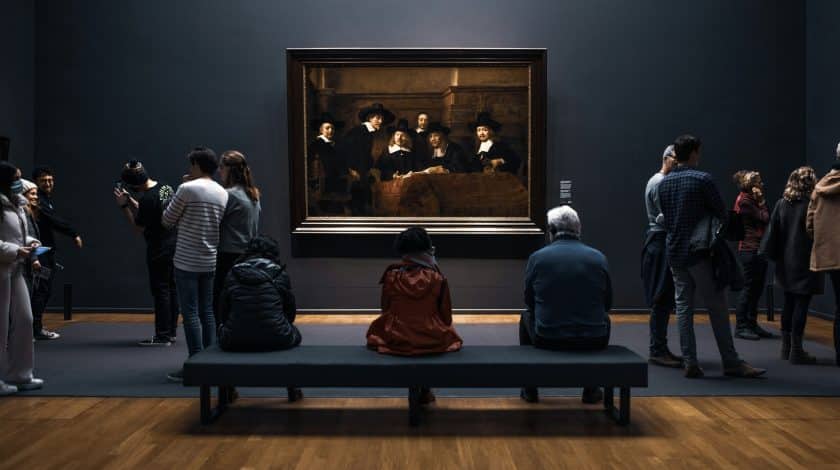Masterpieces of Dutch Art: Painting in 17th Century


The 17th century stands as a pinnacle in the history of Dutch art, known for its unparalleled creativity, innovation, and mastery. In the middle of political, economic, and cultural flourishing of the Dutch Golden Age, artists of this era produced some of the most iconic works in the history of art. From the vibrant streets of Amsterdam to the peaceful landscapes of the countryside, Dutch painters captured the essence of their society with stunning precision and depth. In this exploration of Dutch art during the 17th century, we will be unraveling the stories behind these great works of art, exploring the techniques, themes, and influences that shaped the artistic landscape of the Dutch Golden Age. Since the number of great artworks and artists is quite large, we will only be able to delve into one artist’s works and life.
Rembrandt van Rijn
Born in 1606 in Leiden, Rembrandt is widely regarded as one of the greatest artists in history and is known for his mastery of light and shadow, his emotive portrayals of subjects, and his innovative techniques. Unlike most Dutch masters of the 17th century, Rembrandt’s works depict a wide range of styles and subject matter, from portraits and self-portraits to landscapes, genre scenes, allegorical and historical scenes, biblical and mythological themes, and animal studies. In the beginning of his career, Rembrandt’s work was themed around religion and allegory. It was in 1626 when he first painted etchings. The influence of his teacher Pieter Lastman was still noticeable. Later, when he moved to Amsterdam around 1631, his style changed and he began to paint dramatic biblical and mythological scenes in high contrast and of large format seeking to emulate the baroque style of Rubens. “The Binding of Samson” is the first of its kind in pictorial tradition. No other artist at the time had painted this specific narrative moment. It shows an episode from the biblical story of Judge Samson. Samson was a Nazarite, which gave him special strength when he kept three conditions, such as not cutting his beard and hair. The scene depicted in the painting follows the cutting of Samson’s hair by Delilah, who betrayed him to the Philistines. This aspect of the plot is repeated in this painting, where Delilah is shown in the background fleeing with a shock of hair and scissors in hand. This masterpiece is now at “Städel” museum in Frankfurt.
Later, in around 1640s, his work became less exuberant and more sober in tone, which is said could be reflecting personal tragedy. Biblical scenes were now derived more often from the New Testament than the Old Testament. In 1642 he painted “The Night Watch”, the most substantial of the important group portrait commissions which he received in this period, and through which he sought to find solutions to compositional and narrative problems that had been attempted in previous works. It is one of the most famous Dutch Golden Age paintings. The painting is famed for transforming a group portrait of a civic guard company into a compelling drama, energized by light and shadow called tenebrism. Tenebrism from Italian tenebroso – dark; is a style of painting where there are violent contrasts of light and dark and where darkness becomes a dominating feature of the image. The painting is in the collection of Amsterdam Museum but is currently in “Rijksmuseum” in Amsterdam.
In the 1650s, Rembrandt’s style had undergone significant evolution compared to his earlier works. By this time, he had achieved considerable fame and recognition as an artist, but he also faced financial difficulties due to his lifestyle and changing art market trends. He led an eventful life and was very passionate about working and collecting. He lost all his money and went bankrupt in 1656. But he always had plenty of customers ordering paintings from him, right up to the end of his life.
In the 50s, his style became more introspective and experimental. He moved away from the elaborate, highly detailed compositions of his earlier years to a more spontaneous and expressive approach. His paintings from this period often feature loose brushwork, dramatic lighting, and a deep sense of emotion. The colors became richer and brush strokes more pronounced. With these changes, Rembrandt distanced himself from earlier work and current fashion, which increasingly inclined toward fine, detailed works. His use of light becomes more jagged and harsh, and shine becomes almost nonexistent. He was exploring a wide range of themes, including biblical narratives, historical scenes, portraits, and genre paintings at the time. However, his focus shifted towards more intimate and personal subjects. He produced numerous self-portraits during this time, reflecting his own aging process and perhaps his contemplation of mortality. Rembrandt made a deliberate effort to become more famous as an artist. The buyers would therefore own a portrait of a famous artist, as well as a painting made using Rembrandt’s amazing technique.
In 1669 he painted his last ever self-portrait and painting, as it was the year he died. It is known as “Self-Portrait” and by the thick layers of this picture, it is assumed that Rembrandt was not exhausted at the end of his life, quite the opposite, with that last portrait of his, he suggests a man with flesh and blood.
Rembrandt’s foremost contribution to the history of printmaking was his transformation of the etching process from a relatively new reproductive technique into an art form. His reputation as the greatest etcher in the history of the medium was established in his lifetime. Throughout his career, it is known that Rembrandt produced nearly 400 etchings, 600 paintings, and 2,000 drawings. His innovative techniques and profound understanding of light and shadow revolutionized the art world, inspiring generations of artists, as he was the teacher of 25 future artists. Rembrandt’s ability to evoke emotion and capture the essence of his subjects immortalized him as one of the most influential figures in the history of art.